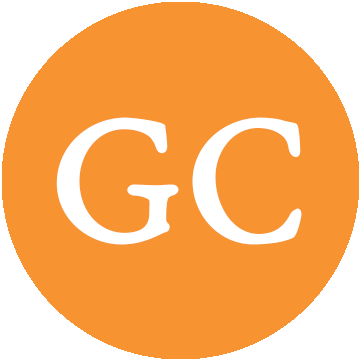China’s GDP per capita is around USD 14,000 which is approximately 6 times that of India. Taiwan’s GDP per capita is around USD 35,500 which is roughly equal to Japan and around 3 times of China’s. GDP per capita is a metric used to check the relative prosperity of its people. The notion of a rich or a poor country is derived from GDP per capita metric only. European countries which are used as a benchmark for the developed world have a GDP per capita of ~ USD 31,000. Similarly Asia, which is a flagbearer of the developing world, has a GDP/capita of ~ USD 8,000. But why are we discussing GDP/capita all of a sudden?
Because Chinese people are more productive in a democratic set up (as in case of Republic of China aka Taiwan) than in an authoritarian set up (as in case of People’s Republic of China aka China) and GDP per capita is a good metric to prove it.
However, not all is well in the neighborhood. Despite its hard working and talented manpower, the country is battling one of its most difficult times. Economic growth has slowed down, people’s patience have weaned away, there are murmurs of an upheaval, it has lost friends and well wishers since the time of pandemic and so on. So what has gone wrong?
There are many factors. Some because of the inherent problems with the Chinese economy, some because of external factors and some because of the leadership. Let us have a look:
Inherent problems in the Chinese economy:
Debt funded growth
Debt is typically a borrowing from the future. As long as the debt capital is used to increase future productivity, future growth rate shall always be higher than the cost of capital (interest rate). However, if the debt is used to fund consumption, it eats away your future income.
With the onset of Covid pandemic, the Chinese authorities relied on debt to pump up its economy just like the other countries. Debt as a percentage of GDP was closed to around 254% by Q4 2018. However, by the end of Q4 2020, it surged to around 290%. Many Chinese and foreign experts think China’s GDP is not expanding at the claimed pace of 6.5%, despite this debt pumping. Some even contend that there is no economic growth. This indicates that although the government is still injecting debt into the economy, it is no longer having an impact. This will probably eventually cause the economy to decline due to debt. But because the economy is so bloated, any deleveraging forced by the government would probably result in a recession, which will have a negative social impact.
Private sector contraction
A thriving private sector in the economy brings in innovation and competition which result in the greater benefit to the country as a whole. Unlike state owned enterprises, the private sector has limited capital and it has to make the most of the limited resource availability to optimize the manufacturing and distribution cost. This results in greater benefits to the citizens and economy as a whole. For example, the intense rivalry in the telecom sector forces the company to continuously upgrade its technology to lower the cost and price its services as per the competitive landscape.
However, in the case of China, President Xi Jinping’s call for ‘Common Prosperity’ which focuses on more egalitarian growth led to the authorities clamping down on wealthy individuals and hi-tech firms to check the concentration of wealth. Jack Ma, the founder of Ant Group (popularly known as Alibaba), was forced to step down and disappear from the public places. It sent the shivers down the new age entrepreneurs who went under the radar to avoid any public naming and shaming.
The mantra of the current administration appears to be concentration of resources in the hands of the public sector. The majority of the more significant sectors of the Chinese economy are to be under the supervision of State Owned Enterprises (SOEs). However, because Chinese SOEs are often less profitable than private businesses, this will result in economic inefficiency, wide level corruption and a suffocating bureaucratic control over the resources.
Avenues for Capital Flow
There are 3 components of GDP namely Consumption, Investments and Net Exports. Chinese society, just like our Indian society, believes in lower consumption and higher investments. Bulk of their investments goes into bank deposits and real estate.
The year 2021 was difficult for China’s real estate developers as a result of tighter financial regulations, which caused some of them—most notably Evergrande—to default on some debt obligations. Growth in commercial sales and real estate investment has halted. Consumers’ primary investment avenue is represented by this sector, and decreasing housing prices risks a systemic debt default. The extent to which debt defaults will affect both domestic investors and the rest of the financial sector is the key question surrounding China’s real estate collapse.
Since the Chinese government operates in a very opaque fashion, we are unable to comment on the extent of this problem. But whatever filtered news is coming out from the neighborhood, it is safe to assume that the Chinese Bank’s are suffering from rising NPA levels which has led to a credit crunch in the economy. This, in a way, represents a shrinking economy, where the lower investments due to credit crunch leads to lower production and thus lower exports. Lower exports further leads to lower profitability and ultimately the final consumption.
External Factors
Belt and Road Initiative
Large loans made by Chinese companies as part of Beijing’s Belt and Road Initiative would further burden China’s banks since it was extended to countries with lower credit ratings like Pakistan (B-, S&P), Sri Lanka (D, S&P), Maldives (CAA, Moody’s) etc. These are all speculative and default grade ratings, which is stressing the balance sheets of low-income countries around the world as well as the lending banks. The performance of the economy will consequently suffer because these banks are crucial conduits for domestic Chinese investment.
Developing countries now owe at least $385 billion in debt as a result of China’s Belt and Road initiative. China faces three unfavorable dynamics in this situation: debt defaults, rising NPA on its banks, and geopolitical and diplomatic ramifications if it seizes countries’ assets in compliance with the strict lending terms.
- Russia – Ukraine War
Under the strain of the epidemic and Russia’s conflict with Ukraine, globalization, the driving force behind China’s economy, is in risk of stalling.
In addition to being stretched and fractured, supply chains are also being reconfigured with new routes and links. It was a poor business decision to prioritize Russia over the globalization in which the country is so thoroughly ingrained, as doing so might further erode consumer confidence in goods labeled “Made in China.”
These difficulties imply that the official Chinese government projection of a 5.5% growth rate in 2022 is overly optimistic. In fact, it currently appears more probable than not that China will grow below 5% in 2022, a rate not seen since the Tiananmen Square disaster of 1989.
Covid 19 Pandemic
Whether Covid 19 was a man made disease or a naturally occuring one, the fact that China stopped domestic flights from Wuhan (the epicenter of Covid Pandemic) and let the international flights continue from there raises enormous doubts over the integrity of the Chinese govt. A pandemic, which could have been handled better with information sharing, was let loose over the world resulting in the death of more than 6 million lives. This has cast aspersions over the Chinese Goodwill throughout the world. And it is not Govt to Govt relation but majority of the people at the ground level hating China like no other nation in the world.
Leadership
From authoritarian to despotic leadership
There is a famous adage. ‘Power corrupts. Absolute power corrupts absolutely’. The Chinese government has always been an authoritative regime where the members of a political party select the top leadership. As long as the churning is there in the top leadership every 5-10 years, new leadership with newer ideas blows the winds of change creating innovation and hope in the society.
In the recently concluded Chinese Congress session, Xi Jingping cemented his leadership position by removing all his opponents (or likely opponents) from the senior functionalities of the party. This paved the path for President Xi remaining in power for life long putting him in the league of Russia’s Vladimir Putin and North Korea’s Kim Jong.
During Xi’s initial terms, we have seen an assertive and confronting China in the East China Sea, Taiwan, Tibet and its other neighbors. During his third term, it won’t be a surprise if any diplomatic escalations are handled through military confrontations.
Conclusion
The economies of India, China, and Pakistan did not exhibit considerable diversion in the GDP growth rate, which was approximately 4% per year, until about 1980.
The breakthrough in GDP Growth Rate was seen in the early 1980s in China, the middle of the 1980s in Pakistan, and the 1990s in India. China’s GDP grew by about 10% annually, compared to India and Pakistan’s GDP growth rates of 6 to 8%. However, Pakistan fell into the hands of military leadership which led to the decline in its growth rate thereafter. India, on the other hand, continues to dance with its democratic values on a steady growth path.
China, however, selected an iron fist to march its people towards a centrally commanded growth model. But since the hard working Chinese people were moving in an upward trajectory, they didn’t mind the iron fist. But it’s time that they realized the iron fist has come along with an iron chain in their feet and once the trajectory changes to a downturn, their movement will become a cascade.
About the author
Satya, is an IIT/IIM graduate who currently works with a major bank in the country. He is a voracious reader with interest in finance, technology and history. When not working, he likes to travel and see new places
(Views expressed are personal)
































